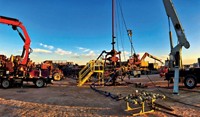Advertisement
Grab your lab coat. Let's get started
Welcome!
Welcome!
Create an account below to get 6 C&EN articles per month, receive newsletters and more - all free.
It seems this is your first time logging in online. Please enter the following information to continue.
As an ACS member you automatically get access to this site. All we need is few more details to create your reading experience.
Not you? Sign in with a different account.
Not you? Sign in with a different account.
ERROR 1
ERROR 1
ERROR 2
ERROR 2
ERROR 2
ERROR 2
ERROR 2
Password and Confirm password must match.
If you have an ACS member number, please enter it here so we can link this account to your membership. (optional)
ERROR 2
ACS values your privacy. By submitting your information, you are gaining access to C&EN and subscribing to our weekly newsletter. We use the information you provide to make your reading experience better, and we will never sell your data to third party members.
Environment
Mixed Review For Fracking Chemicals
ACS Meeting News: Study reveals that industry is using few toxic chemicals, but data gaps remain
by Stephen K. Ritter
August 14, 2014
| A version of this story appeared in
Volume 92, Issue 33
A new study exploring the scope of use and the safety of hydraulic fracturing chemicals used for enhanced oil and natural gas production has concluded that few of 90 commonly used compounds are toxic to people.
But there’s still insufficient information from the oil and gas industry to fully evaluate the safety of the chemical additives, according to the study’s lead author, environmental engineer William T. Stringfellow of the University of the Pacific and Lawrence Berkeley National Laboratory. Ultimately, the industry needs to be more transparent in revealing toxicity data on the formulations used in fracking, Stringfellow told C&EN.
Stringfellow presented the results in the Division of Environmental Chemistry at the American Chemical Society national meeting in San Francisco.
The motivation for the review, Stringfellow said, was to resolve debate about which chemicals are really being used. Some environmental advocates claim that thousands of toxic chemicals are being injected into wells. But the fracking industry has countered that it is only using a few compounds that double as food additives. He said, “As scientists, we looked at the debate and asked, ‘What’s the real story?’ ”
To find out, Stringfellow and his colleagues sifted through data on the voluntary industry self-reporting website FracFocus and data compiled by the environmental monitoring organization SkyTruth. They cross-checked the data against EPA and industry reports, but he acknowledges the information is incomplete.

The assessment initially turned up 81 chemicals (J. Hazard. Mater. 2014, DOI: 10.1016/j.jhazmat.2014.04.040). Stringfellow’s list, which has now grown to 90 compounds, includes gelling agents to thicken the fluids, corrosion inhibitors to protect pipes, and biocides to keep microbes from fouling wells. These are used in many different fracking-fluid formulations.
Fracking fluids do contain many nontoxic and food-grade materials, as the industry asserts, Stringfellow said. On the other hand, little is known about the health risks of more than one-third of the compounds, and eight raised red flags for being toxic to mammals.
Reviewing the new list, Hong Sun of Houston-based oil- and gas-field services company Baker Hughes and Darren Maley of Canadian firm Trican Well Service both noted that it is a good start. But they found discrepancies in classifying some of the compounds by function and noted that some chemicals are missing whereas others listed are rarely or no longer used. Maley suggests and Stringfellow agrees that the study would benefit from a collaborative review with industry partners to refine the list.
“The oil and gas industry relies too much on others to evaluate the environmental impact of the chemical additives it uses and has been doing a poor job in communicating information with the public,” Sun said. “But if all companies would commit to systematically evaluating and disclosing all the chemical additives in all fracturing treatments, the current study will be more accurate and even more meaningful.”




Join the conversation
Contact the reporter
Submit a Letter to the Editor for publication
Engage with us on Twitter